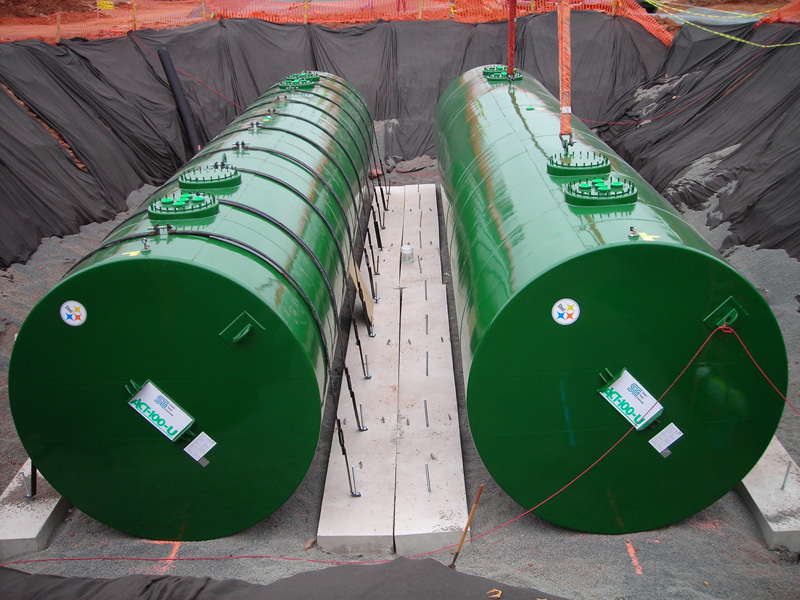Performing a proper excavation is an important component of a successful storage tank installation in Maryland. Installing an underground storage tank isn’t as simple as digging a hole in the ground, putting in the tank, and covering it up. Tank material, contents, and conditions above and below ground all factor into how the tank is installed.
Even though the tank itself ends up below ground, there’s a lot more to the installation than meets the eye! So in this week’s blog, we’re going to talk about how these factors are accounted for by a professional storage tank installation contractor.

Storage Tank Installation in Maryland: Proper Excavation and Backfill
Excavation
There are a number of factors that determine the size of an excavation:
- Codes and regulations
- Number of tanks
- Ground-water
- Condition of the excavation bottom
- Site traffic
- Tank material / contents
Codes and Regulations
Codes and regulations at the federal, state, and local levels all need to be accounted for when performing the excavation.
Number of Tanks
In situations where multiple underground tanks are being installed, there must be an adequate amount of spacing between the tanks and between the tanks and the sides of the hole.
Ground-Water
The level of the water table is a very important factor in the depth of excavation. An installation where water is present in the hole is called a wet-hole installation. In this type of installation, the contractor needs to pump out the water so that the water level doesn’t go higher than the top of the backfill bedding. Once the tank is ballasted and backfilled completely, ground water can be allowed to return to the excavation. This prevents tank flotation.
Excavation Bottom
The excavation bottom needs to be uniform and free of large rocks in order to lay a proper backfill. At the same time, the bottom can’t be too soft, at the risk of the tank settling and sinking in the soil. In this case, a concrete slab or other stabilizing material may be installed under the backfill in order to provide support.
Site Traffic
Will there be vehicle traffic on top of the tank? This is very common in underground petroleum fuel tank installations at fueling stations. In this case, concrete or another stabilizing material is installed under the backfill for support.
Tank Material / Contents
The material a tank is made out of, as well as its contents, both have an effect on the excavation. A tank may require a specific anchoring system to prevent flotation if it’s material/contents make it more prone to flotation.